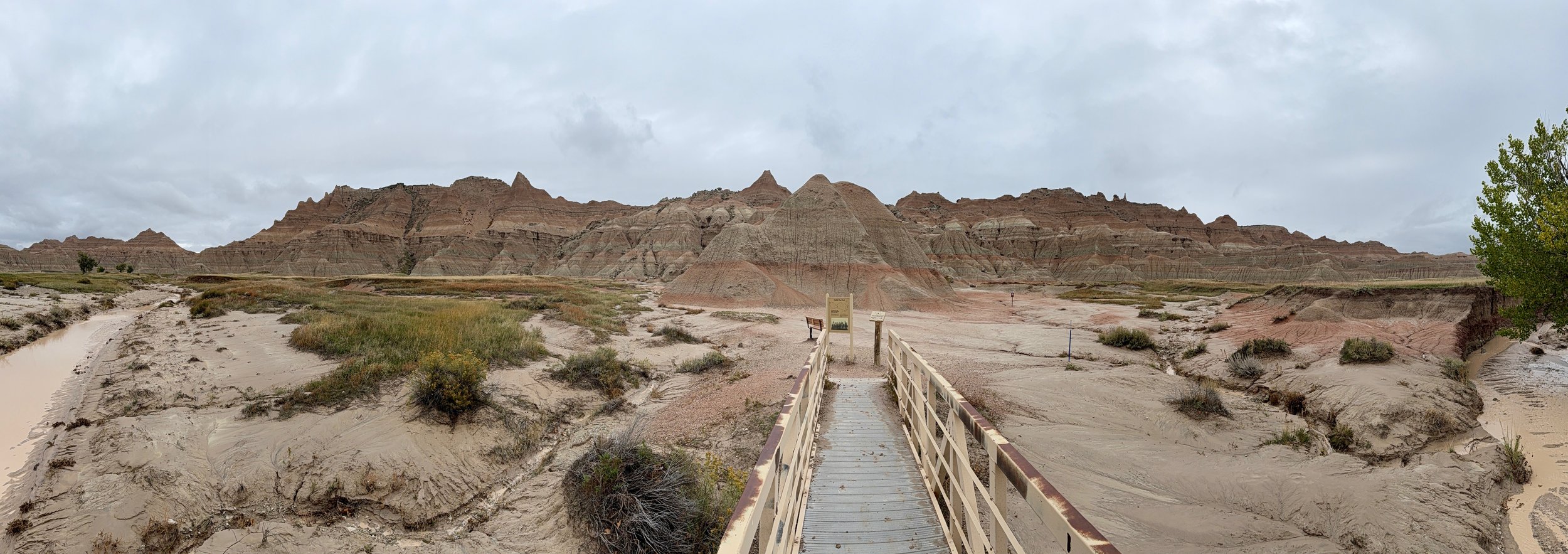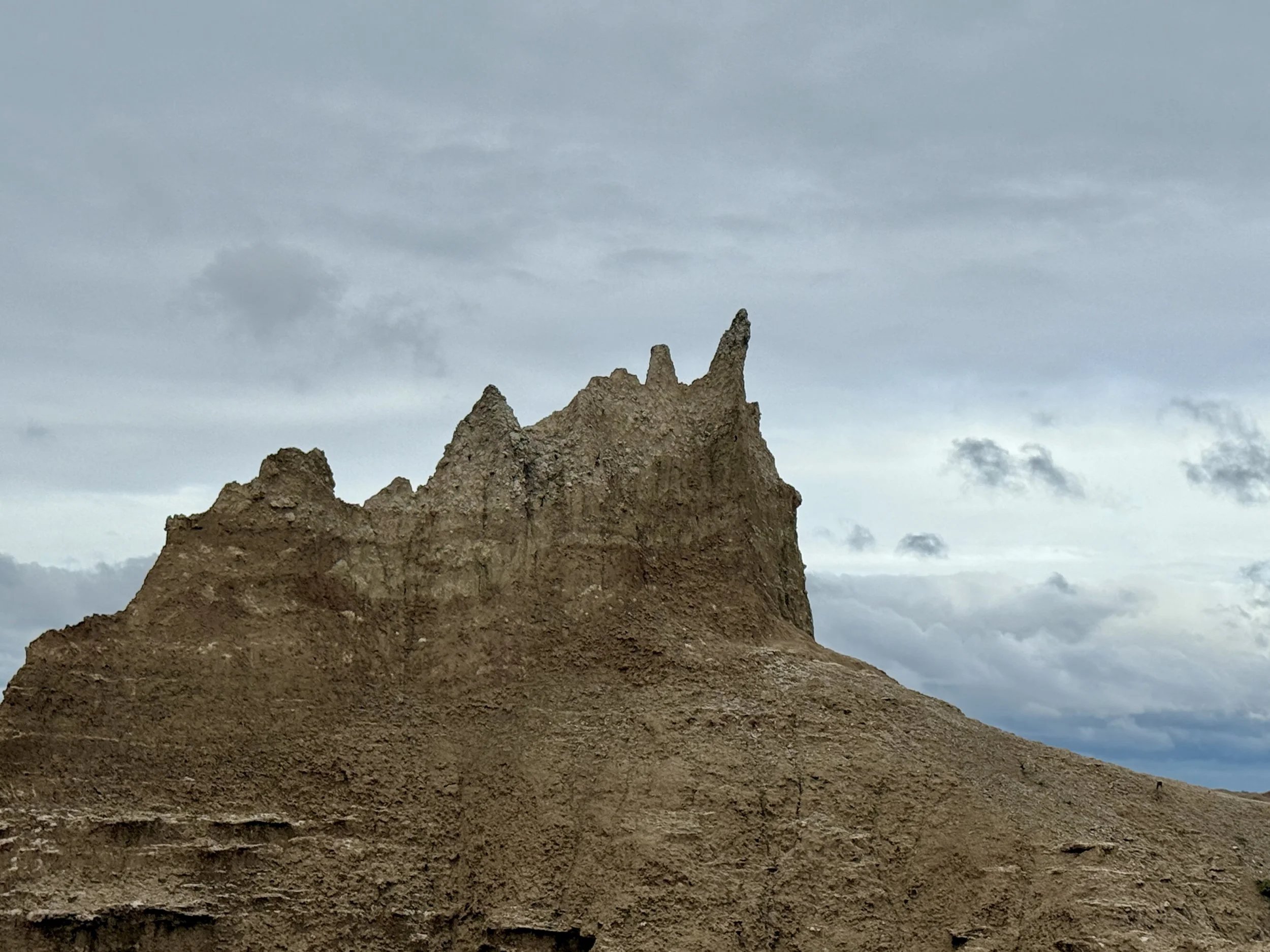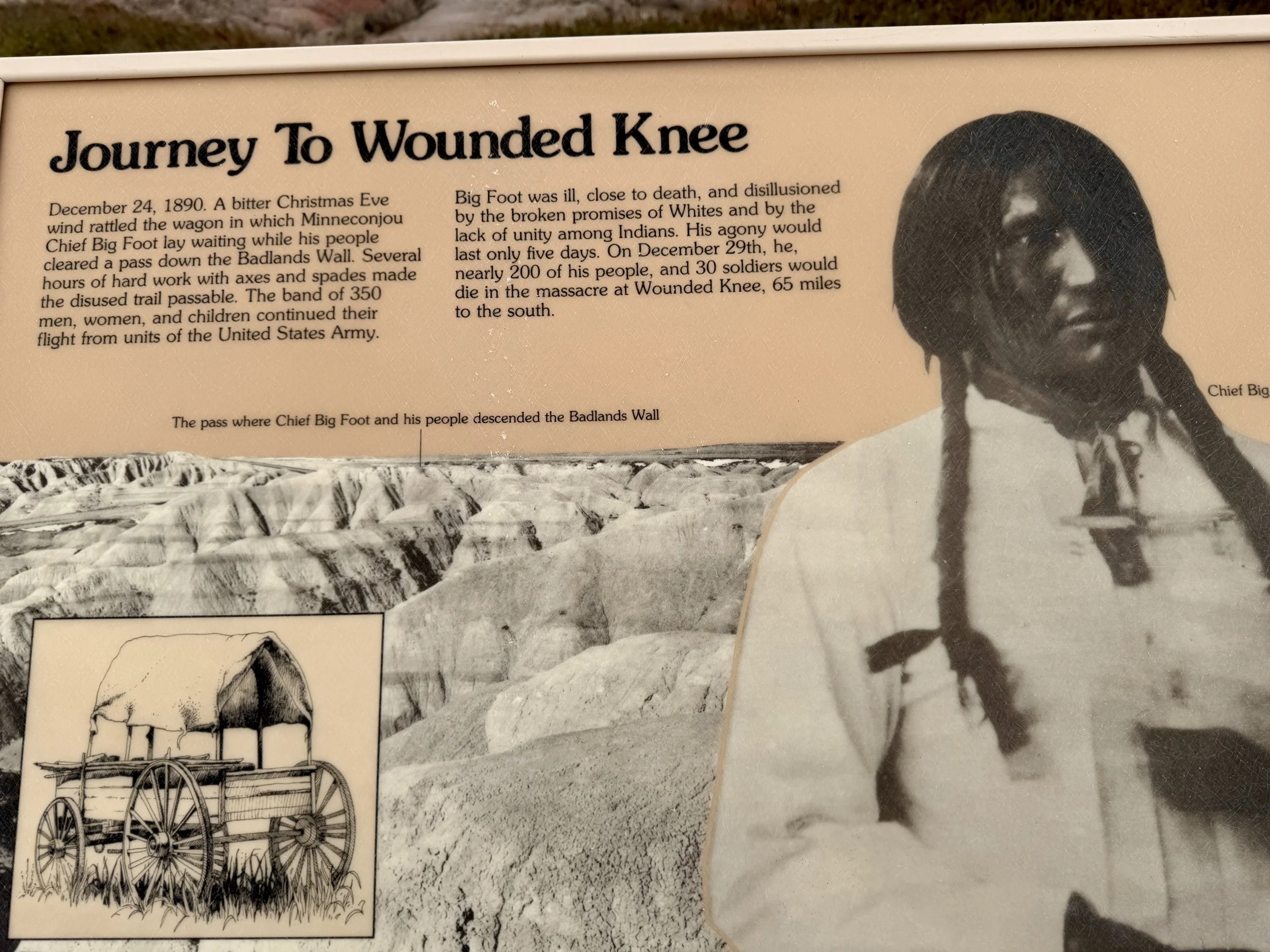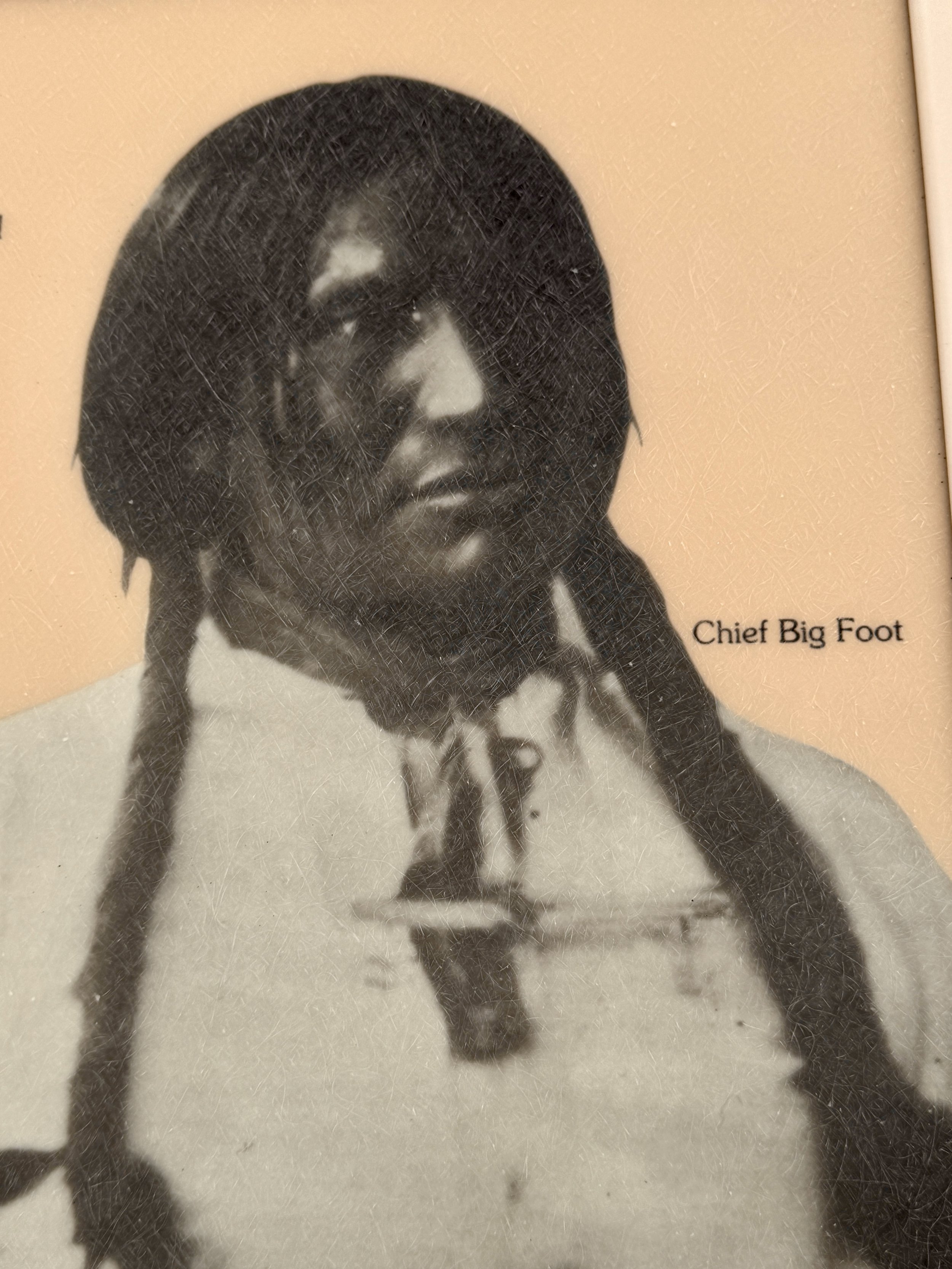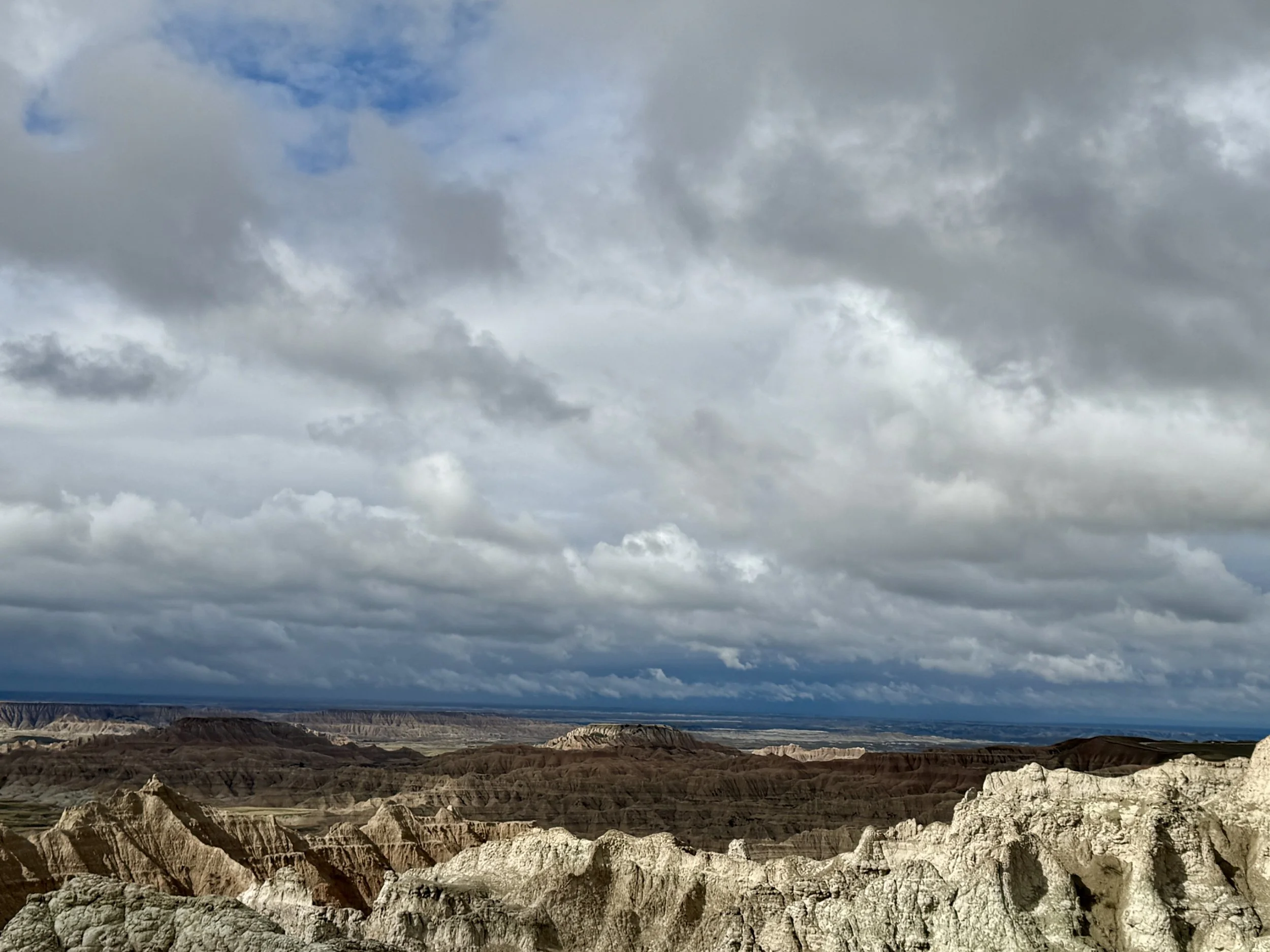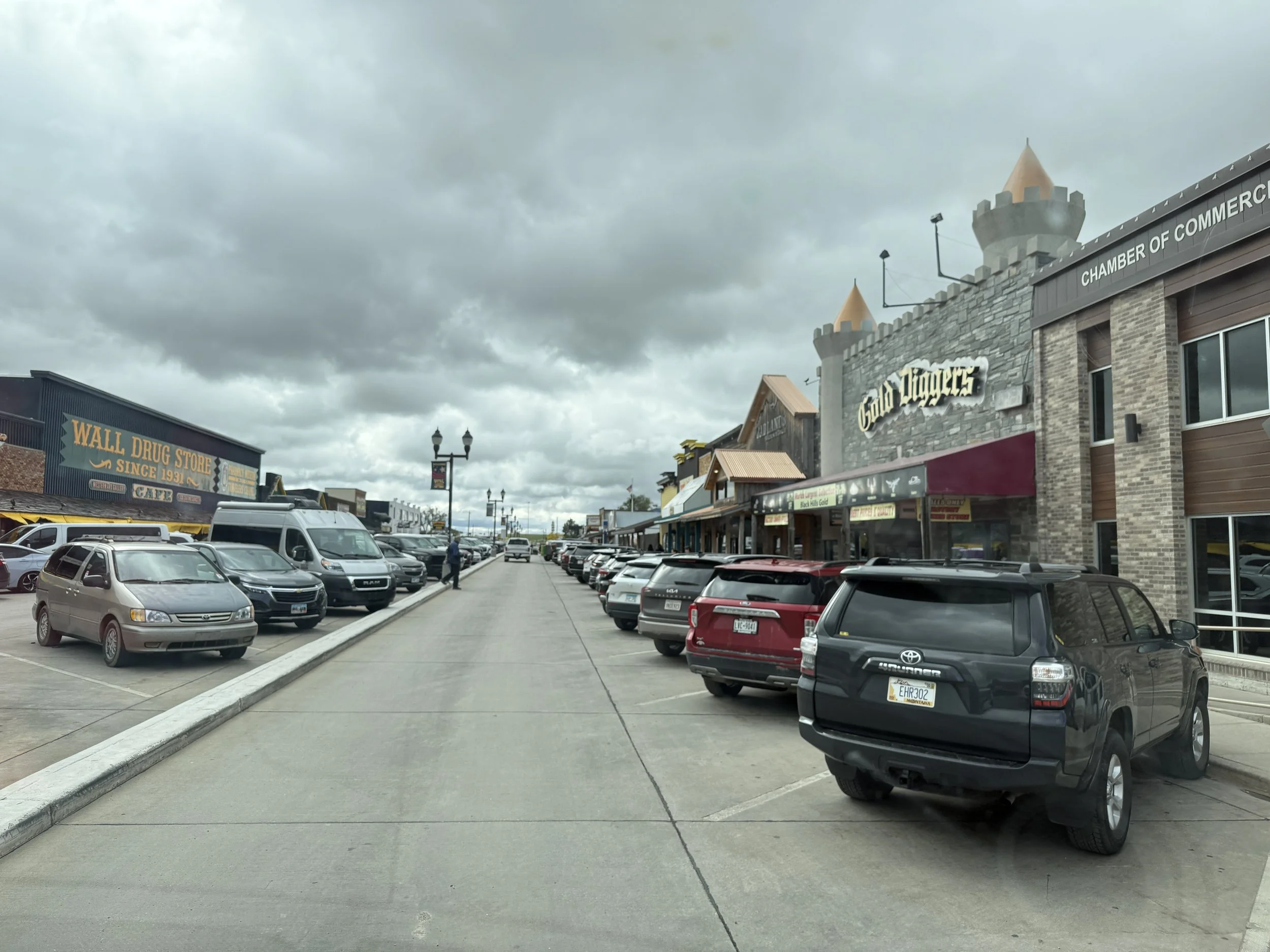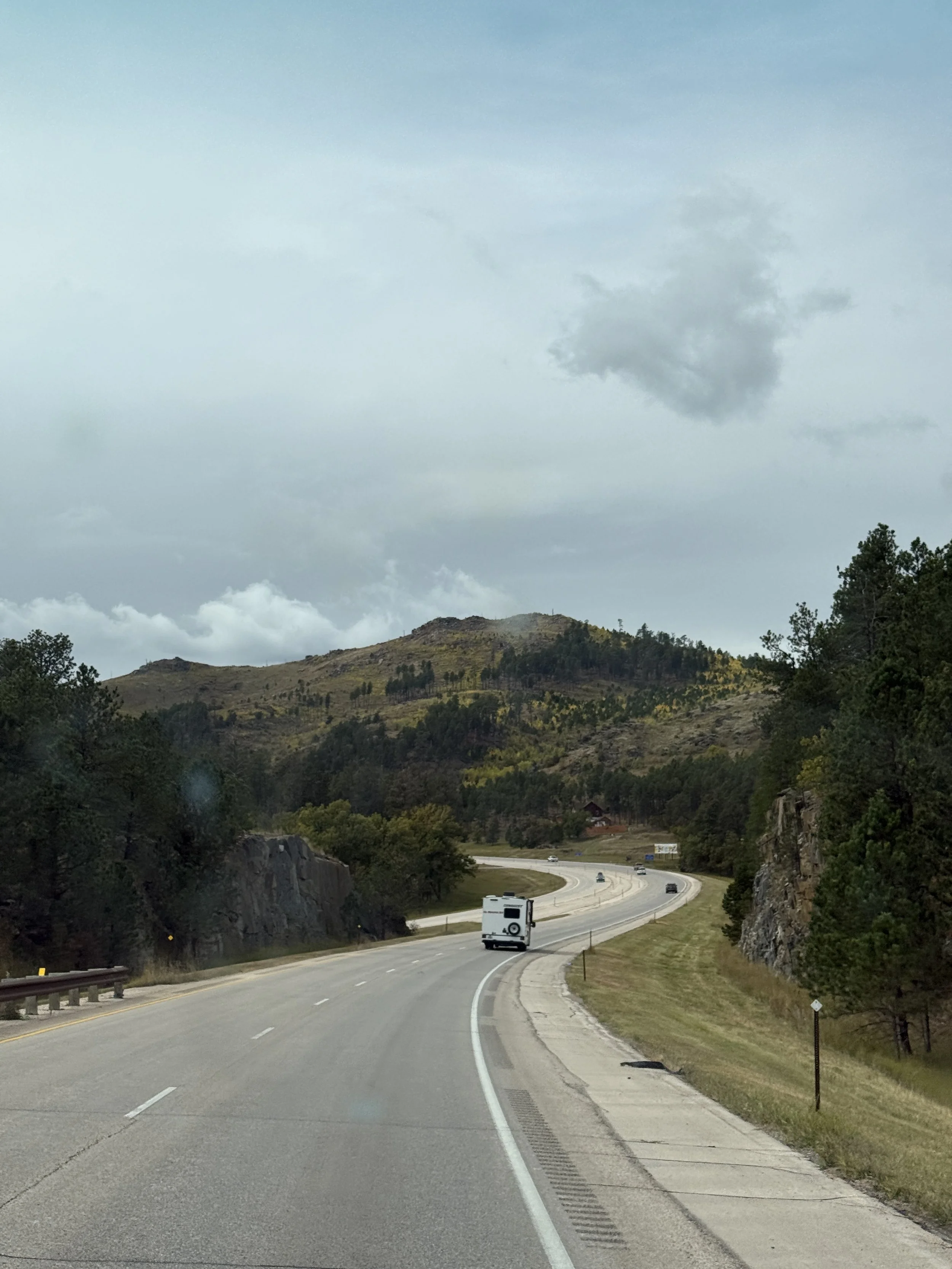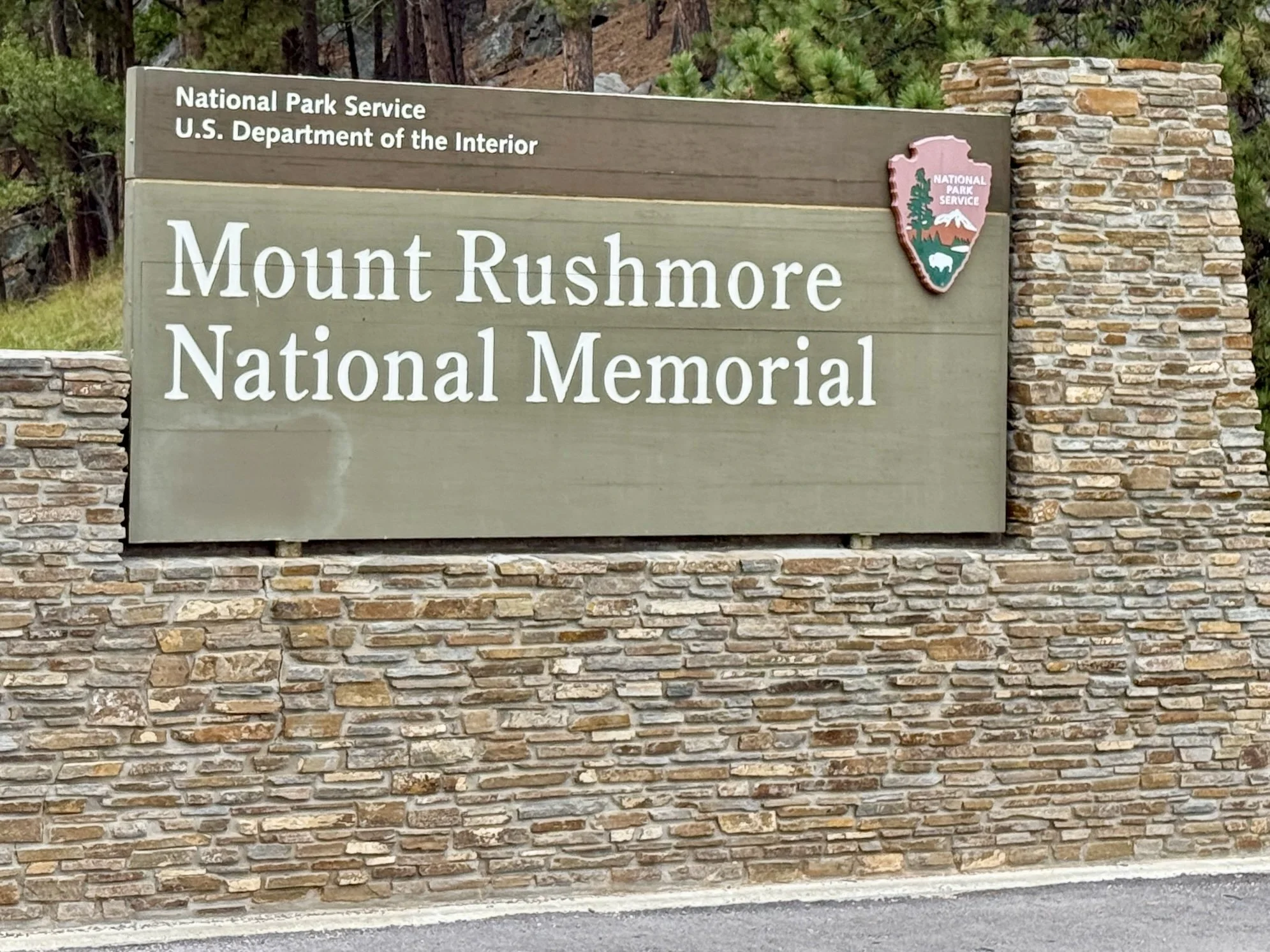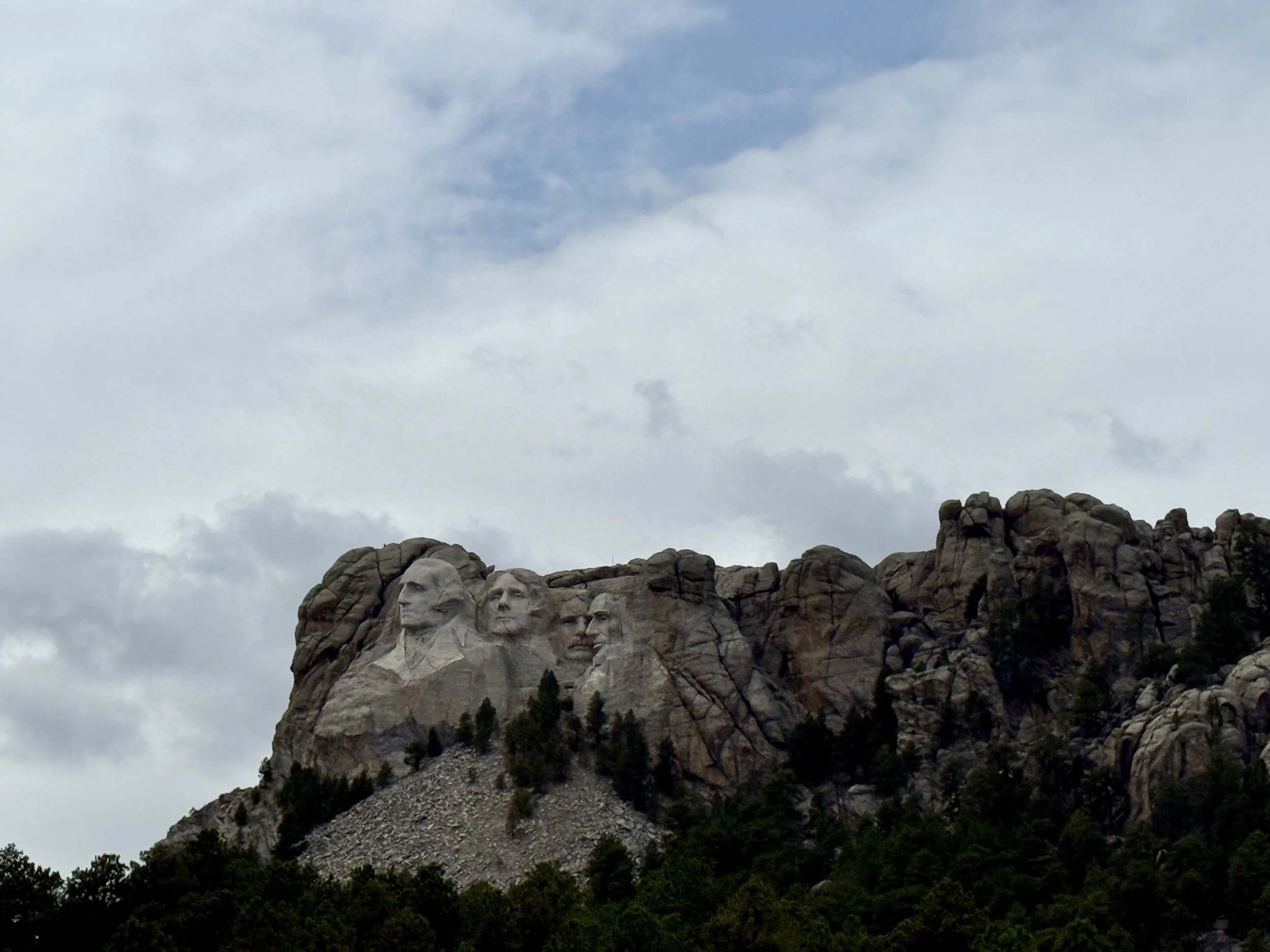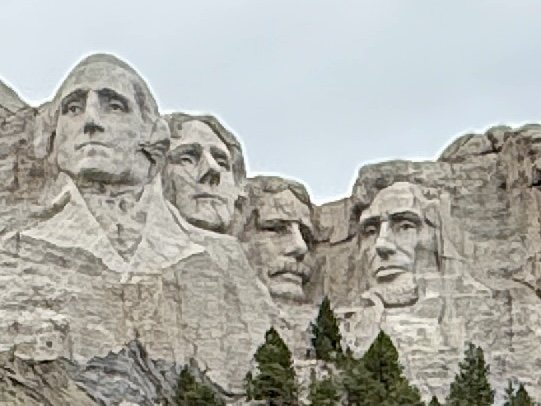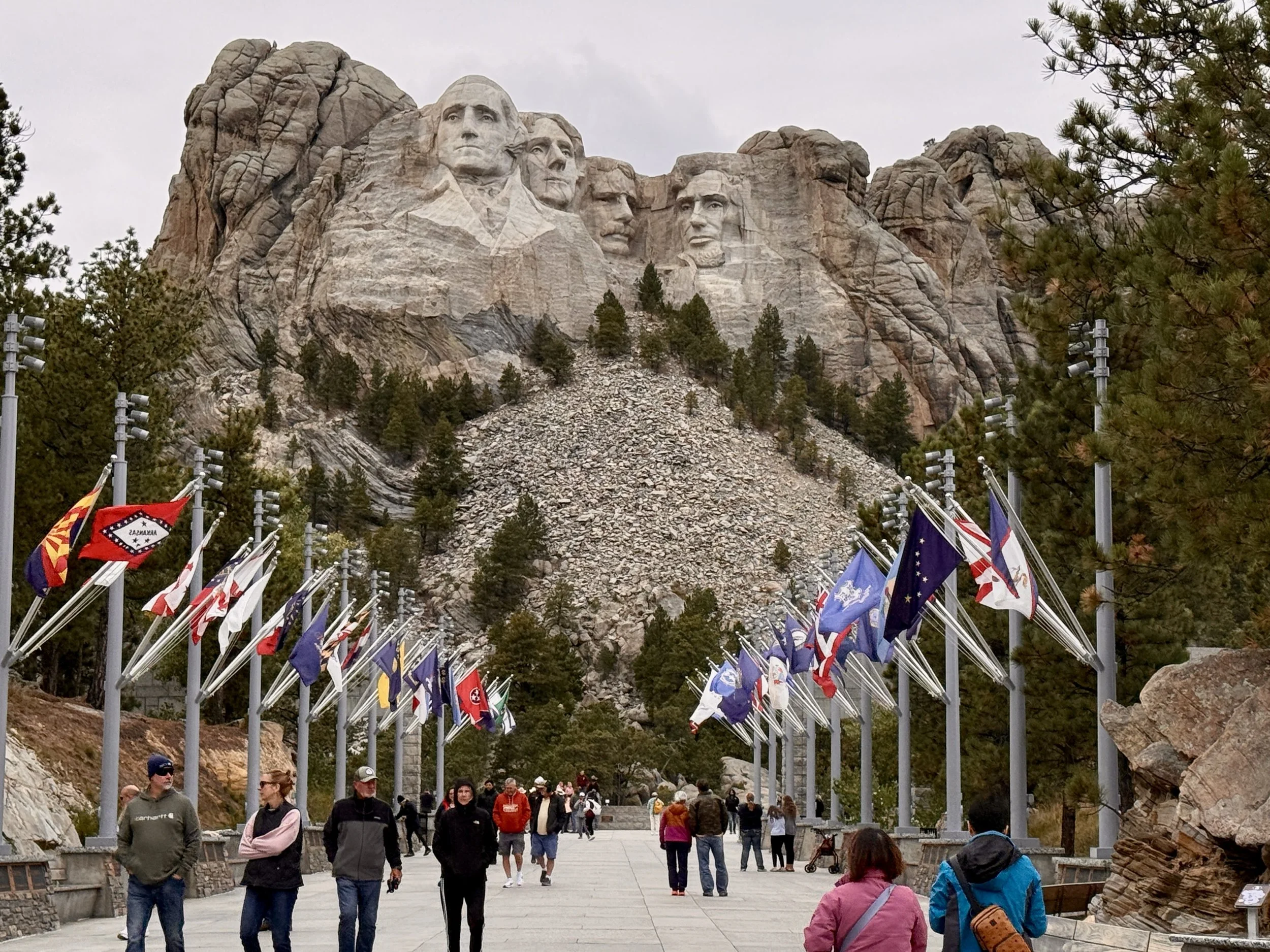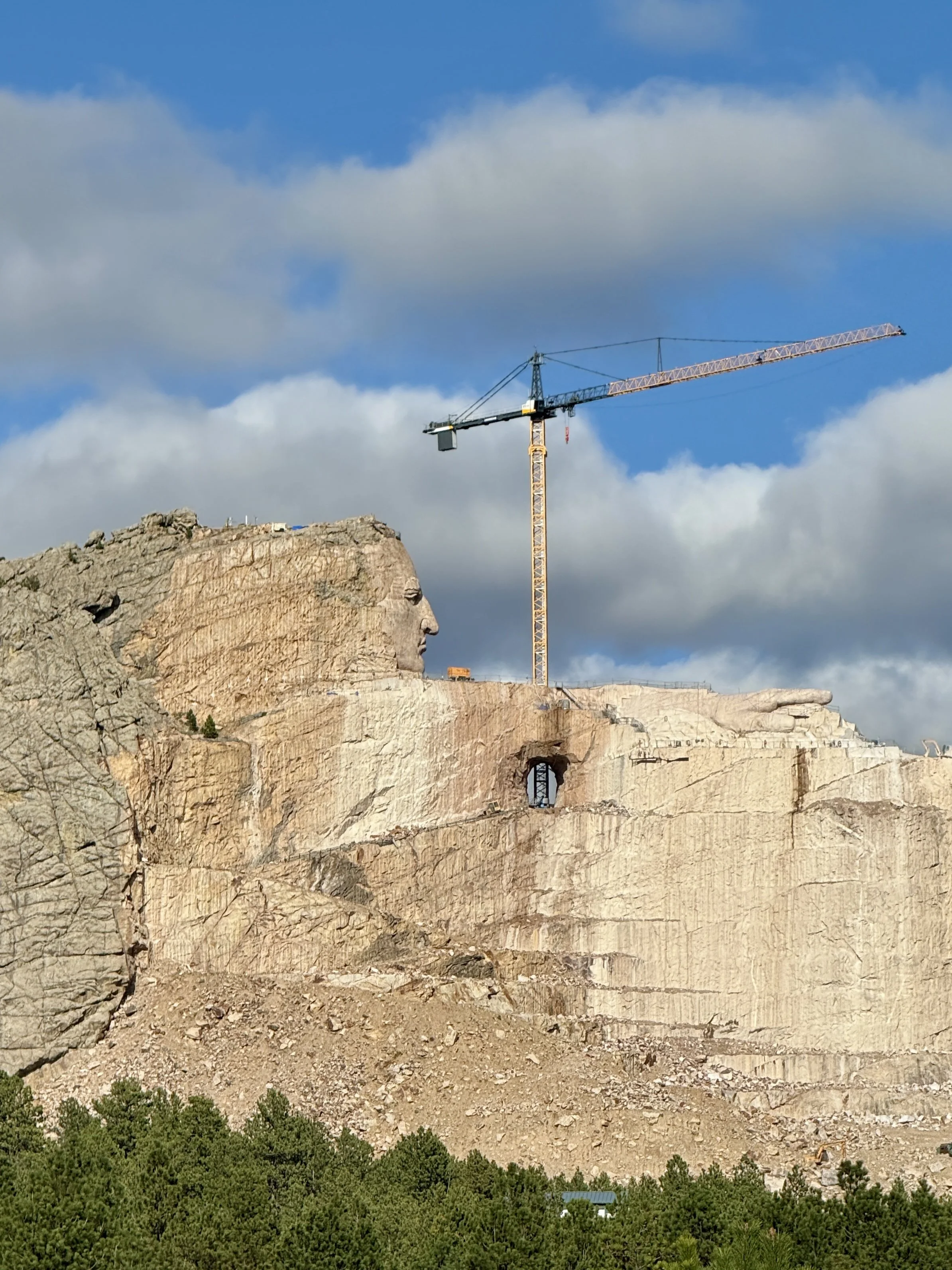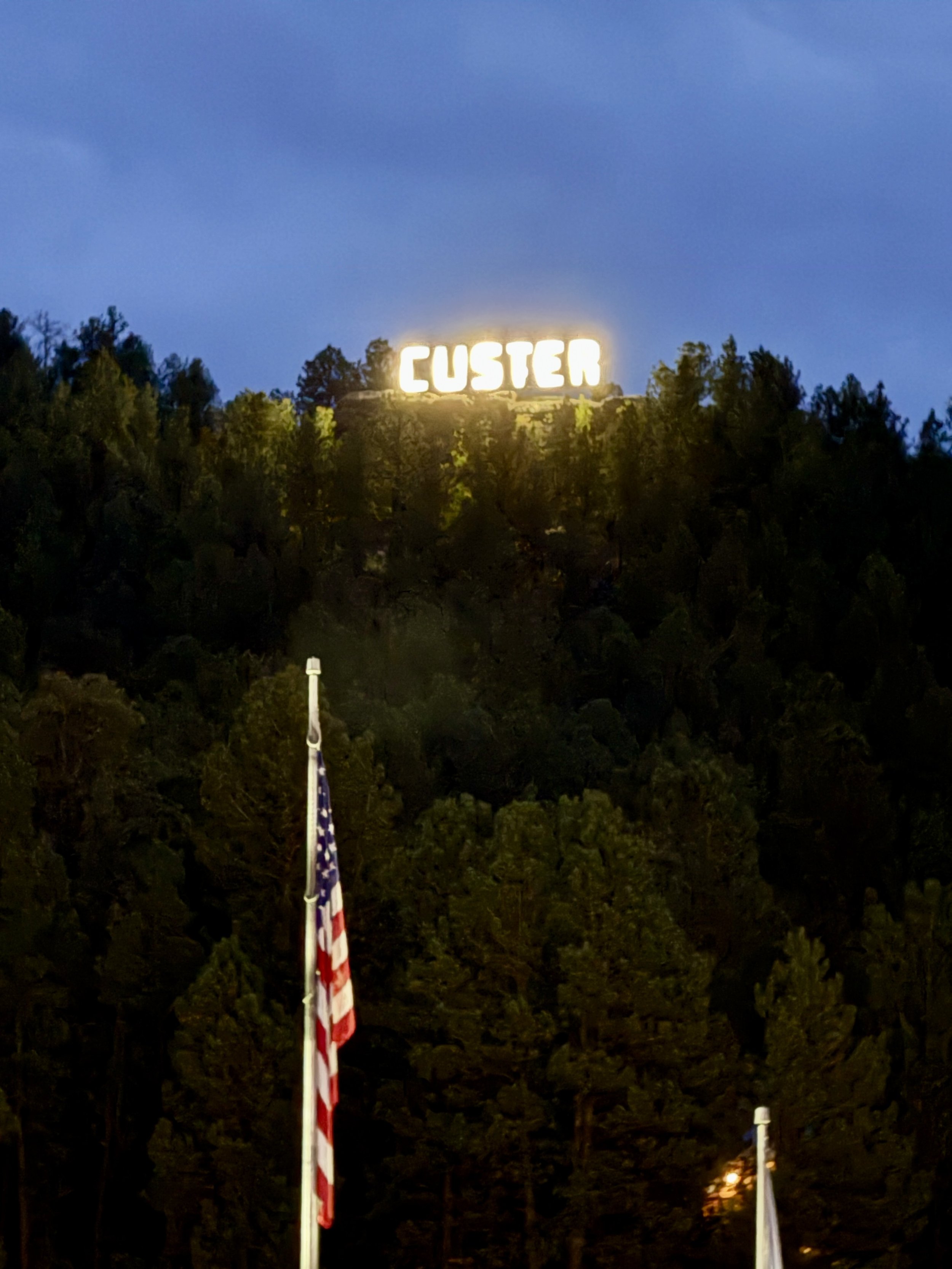Day 17 + 18-From Wounded Knee to Bison Burgers
Oct 5th + 6th, 2025
In the morning, we made the 18-mile journey through the rest of Badlands National Park, winding through sweeping valleys and rugged mountain passes. Along the way, we stopped at a marker for the Journey of Wounded Knee.
It’s a heartbreaking story. Violent conflicts between Native American tribes and the U.S. military were common across the territories, and one of the last major clashes took place on December 29, 1890. That winter, government officials banned a growing religion called the Ghost Dance on a South Dakota reservation. As part of the crackdown, soldiers from the Seventh U.S. Cavalry arrested a group of Lakota traveling toward Pine Ridge Reservation and confined them near Wounded Knee Creek.
The next day, as the soldiers tried to seize their weapons, a gun went off—and chaos erupted. When the gunfire stopped, hundreds of Lakota men, women, and children lay dead. The site later became a place of remembrance, and Wounded Knee remains a powerful rallying cry for Native American rights to this day.
We left the park in awe, imagining what it must have been like to cross this vast, jagged land without roads.
Soon after, we passed through the famous town of Wall and headed east on I-90, making our way back toward the Black Hills. In the distance, Mount Rushmore began to appear—tiny at first, then growing larger as we climbed. Up close, it’s breathtaking: massive, intricate, and deeply patriotic.
After taking in the monument, we headed south to visit Crazy Horse. It’s a long drive up to the site and the impressive North American Indian Museum, home to more than 40,000 artifacts. The Crazy Horse Memorial is still under construction, with a towering crane perched above Chief Crazy Horse’s face and hand—both now completed. Work continues on the horse itself, with an estimated completion date around 2035.
The project began in 1948, spearheaded by sculptor Korczak Ziolkowski, who worked on it until he died in 1982. He and his wife raised ten children, and today, two of their sons and several grandchildren continue the work. The family owns all the land surrounding the monument and relies entirely on private donations—no government funding. It’s an incredible story, and worth looking into if you haven’t already.
Speaking of incredible stories, one of my favorites hangs in the museum—a painting of a stagecoach rolling through the countryside. It reminded me of my great-grandfather, John J. King, the patriarch of the King family and son of an Irish immigrant. In the early 1900s, he drove stagecoaches out of Denver, working for life insurance companies to track down folks who faked their deaths, collected the payout, and skipped town to start new lives out west. He eventually worked for—and later bought—Hooper Holmes, Inc., where 4 generations of Kings would work, with yours truly being the last King to work for the company for 25 years. I’ll buy you a beer and tell you the rest of the story!!
From there, the Royals rolled on to the nearby town of Custer and settled into a cozy spot at Big Pines Campground. Rain moved in, so we decided to stay two nights—time to relax, do some laundry, and recharge.
That evening, we wandered into the Buglin’ Bull Restaurant, where the King enjoyed a delicious bison burger and local beer, while the Queen savored homemade mac & cheese and an ice-cold margarita.
Life on the road is pretty darn good in this wonderful USA. 🍀😎🍺

